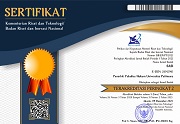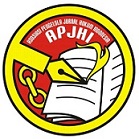TINJAUAN YURIDIS TENTANG PENERAPAN ANCAMAN PIDANA MATI DALAM TINDAK PIDANA KORUPSI
 )
)
(1) Fakultas Hukum Universitas Pattimura, Indonesia
 Corresponding Author
Corresponding Author
Abstract
Corruption has become a complex phenomenom in Indonesia which frequently involves the government officials, legislative and judicative. Members, bankers, conglomerates, and also corporation that misuse the state’s finance. As a result, Indonesia must suffer from a huge loss which directly affects the people’s economy. This criminal act, somehow, must be teckled seriously as it has become a national issue. In addressing that problem, the writer specifically focuses on three crusial sections which composed. Of the regulation of death penalty based on law, the development of thoughts regarding the existence of death penalty, and also factors that influence the implementation of death penalty on corruption. As a conclusion, the writer points out that overcoming the act of corrupt which refers to an extraordinary crime has been regulated in law of Indonesian Number 31 years 1999 juncto law number 20 year 2001 as an. Effort to solve the corruption. The threat of death penalty which becomes the hardest penalty is settled as a sort of main criminal based om article 10 substantive of law. Moreover, the discussion of death penalty in law number 31 year 1999 juncto law number 20 year 2001 about counter-corruption, is also stated in article 2 verse (2), however its implementation depends on the requirement indicated in the law. Last but not least is the substantial factor that impedes the implementation of the death penalty which points out the lack of seriousness of legislative members in formulating the sanction of dead penalty as stated in law number 31 year 1999 juncto law number 20 year 2001, which indeed prevent the law enforcement to be implemented successfully in Indonesia
Keywords
DOI
10.47268/sasi.v20i1.341
Published
2014-06-30
How To Cite
@article{SASI341,
author = {Denny Latumaerissa},
title = {TINJAUAN YURIDIS TENTANG PENERAPAN ANCAMAN PIDANA MATI DALAM TINDAK PIDANA KORUPSI},
journal = {SASI},
volume = {20},
number = {1},
year = {2014},
keywords = {regulation of death penalty; corruption},
abstract = {Corruption has become a complex phenomenom in Indonesia which frequently involves the government officials, legislative and judicative. Members, bankers, conglomerates, and also corporation that misuse the state’s finance. As a result, Indonesia must suffer from a huge loss which directly affects the people’s economy. This criminal act, somehow, must be teckled seriously as it has become a national issue. In addressing that problem, the writer specifically focuses on three crusial sections which composed. Of the regulation of death penalty based on law, the development of thoughts regarding the existence of death penalty, and also factors that influence the implementation of death penalty on corruption. As a conclusion, the writer points out that overcoming the act of corrupt which refers to an extraordinary crime has been regulated in law of Indonesian Number 31 years 1999 juncto law number 20 year 2001 as an. Effort to solve the corruption. The threat of death penalty which becomes the hardest penalty is settled as a sort of main criminal based om article 10 substantive of law. Moreover, the discussion of death penalty in law number 31 year 1999 juncto law number 20 year 2001 about counter-corruption, is also stated in article 2 verse (2), however its implementation depends on the requirement indicated in the law. Last but not least is the substantial factor that impedes the implementation of the death penalty which points out the lack of seriousness of legislative members in formulating the sanction of dead penalty as stated in law number 31 year 1999 juncto law number 20 year 2001, which indeed prevent the law enforcement to be implemented successfully in Indonesia },
issn = {2614-2961}, pages = {8--18} doi = {10.47268/sasi.v20i1.341},
url = {https://fhukum.unpatti.ac.id/jurnal/sasi/article/view/341}
}
Cited-By:
1. Developing Women-Friendly and Child-Caring Villages in Indonesia: A Comprehensive Model for Sustainable Community Empowerment Aligned with SDG 5 (Gender Equality)
Rostiena Pasciana, Mila Karmila, Ieke Sartika Iriany, Lia Juliasih, R. Ismira Febrina
Journal of Lifestyle and SDGs Review vol: 5 issue: 2 first page: e03165 year: 2025
Type: Journal [View Source]
| Dublin Core | PKP Metadata Items | Metadata for this Document | |
| 1. | Title | Title of document | TINJAUAN YURIDIS TENTANG PENERAPAN ANCAMAN PIDANA MATI DALAM TINDAK PIDANA KORUPSI |
| 2. | Creator | Author's name, affiliation, country | Denny Latumaerissa; Fakultas Hukum Universitas Pattimura; Indonesia |
| 3. | Subject | Discipline(s) | |
| 3. | Subject | Keyword(s) | regulation of death penalty; corruption |
| 4. | Description | Abstract | Corruption has become a complex phenomenom in Indonesia which frequently involves the government officials, legislative and judicative. Members, bankers, conglomerates, and also corporation that misuse the state’s finance. As a result, Indonesia must suffer from a huge loss which directly affects the people’s economy. This criminal act, somehow, must be teckled seriously as it has become a national issue. In addressing that problem, the writer specifically focuses on three crusial sections which composed. Of the regulation of death penalty based on law, the development of thoughts regarding the existence of death penalty, and also factors that influence the implementation of death penalty on corruption. As a conclusion, the writer points out that overcoming the act of corrupt which refers to an extraordinary crime has been regulated in law of Indonesian Number 31 years 1999 juncto law number 20 year 2001 as an. Effort to solve the corruption. The threat of death penalty which becomes the hardest penalty is settled as a sort of main criminal based om article 10 substantive of law. Moreover, the discussion of death penalty in law number 31 year 1999 juncto law number 20 year 2001 about counter-corruption, is also stated in article 2 verse (2), however its implementation depends on the requirement indicated in the law. Last but not least is the substantial factor that impedes the implementation of the death penalty which points out the lack of seriousness of legislative members in formulating the sanction of dead penalty as stated in law number 31 year 1999 juncto law number 20 year 2001, which indeed prevent the law enforcement to be implemented successfully in Indonesia |
| 5. | Publisher | Organizing agency, location | Faculty of Law, Universitas Pattimura |
| 6. | Contributor | Sponsor(s) | |
| 7. | Date | (YYYY-MM-DD) | 2014-06-30 |
| 8. | Type | Status & genre | Peer-reviewed Article |
| 8. | Type | Type | |
| 9. | Format | File format | |
| 10. | Identifier | Uniform Resource Identifier | https://fhukum.unpatti.ac.id/jurnal/sasi/article/view/341 |
| 10. | Identifier | Digital Object Identifier | 10.47268/sasi.v20i1.341 |
| 11. | Source | Title; vol., no. (year) | SASI; Vol 20, No 1 (2014): Volume 20 Nomor 1, Januari - Juni 2014 |
| 12. | Language | English=en | en |
| 13. | Relation | Supp. Files | |
| 14. | Coverage | Geo-spatial location, chronological period, research sample (gender, age, etc.) | |
| 15. | Rights | Copyright and permissions | Copyright: Authors who publish their manuscripts in this Journal agree to the following conditions: 1. The copyright in each article belongs to the author, as well as the right to patent. 2. Authors can enter into separate, additional contractual arrangements for the non-exclusive distribution of the journal's published version of the work (e.g., post it to an institutional repository or publish it in a book), with an acknowledgment of its initial publication in this journal. 3. Authors are permitted and encouraged to post their work online (e.g., in institutional repositories or on their website) before and during the submission process, as it can lead to productive exchanges, as well as earlier and greater citation of published work. 4. Authors have the right to self-archiving of the article (Author Self-Archiving Policy)
License: The SASI Journal is disseminated based on the Creative Commons Attribution-NonCommercial 4.0 International license terms. This license allows anyone to copy and redistribute this material in any form or format, compose, modify, and make derivatives of this material for any purpose. You cannot use this material for commercial purposes. You must specify an appropriate name, include a link to the license, and certify that any changes have been made. You can do this in a way that is appropriate but does not imply that the licensor supports you or your use.
|
Copyright (c) 2014 Denny Latumaerissa

This work is licensed under a Creative Commons Attribution-NonCommercial 4.0 International License.
Cited-By:
1. Developing Women-Friendly and Child-Caring Villages in Indonesia: A Comprehensive Model for Sustainable Community Empowerment Aligned with SDG 5 (Gender Equality)
Rostiena Pasciana, Mila Karmila, Ieke Sartika Iriany, Lia Juliasih, R. Ismira Febrina
Journal of Lifestyle and SDGs Review vol: 5 issue: 2 first page: e03165 year: 2025
Type: Journal [View Source]

 : 6231 times
: 6231 times Download : 9827 times
Download : 9827 times
















